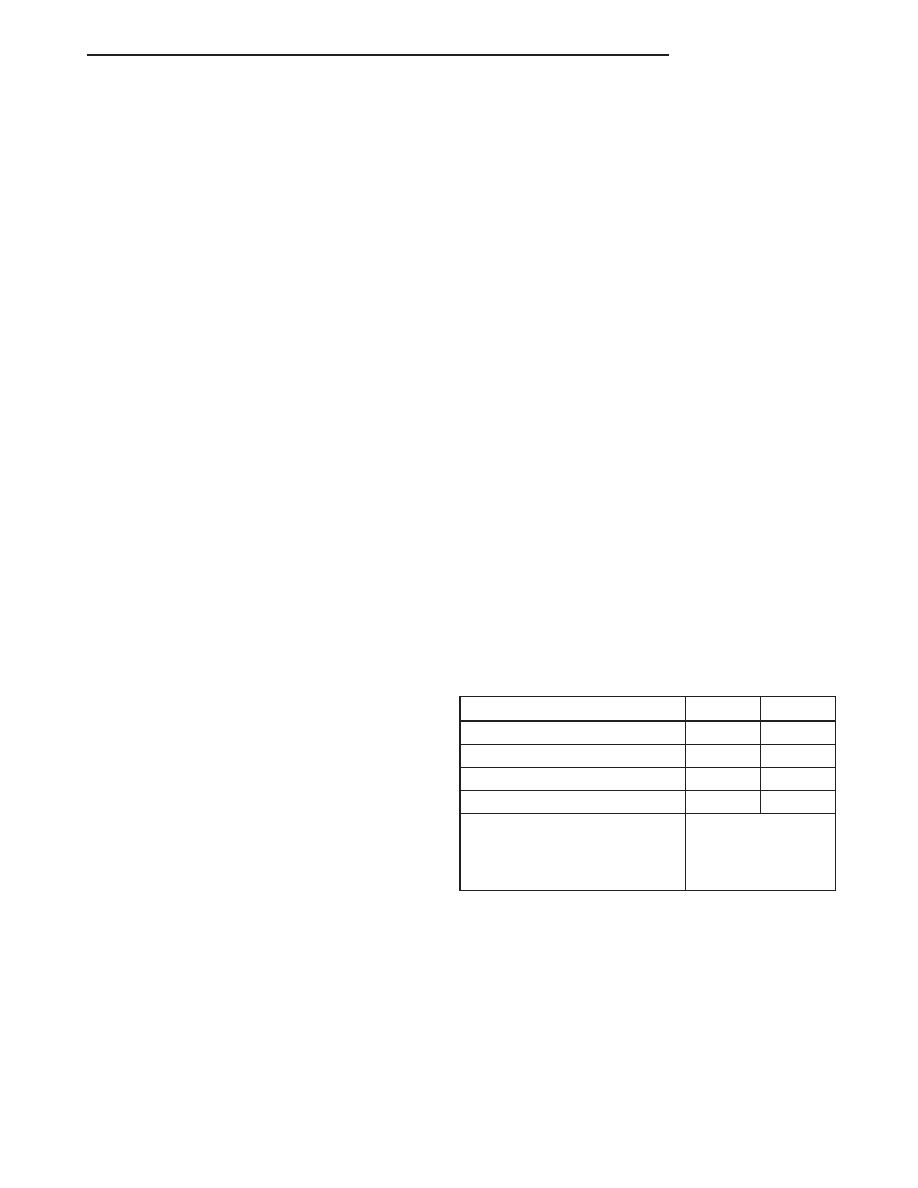Chrysler Sebring, Stratus sedan, Sebring Convertible. Manual - part 745

There are different PAG oils available, and each
contains a different additive package. Use only
refrigerant oil of the same type as recommended to
service the refrigerant system (always refer to the
specification tag included with the replacement
A/C compressor or the underhood A/C system specifi-
cation tag).
The Sanden TRS-090 A/C compressor used in this
vehicle is designed to use ND-15 PAG refrigerant oil.
Use only this type of refrigerant oil when servicing
the A/C compressor for the 2.0L and the 2.4L Turbo
engine.
The Visteon HS-15 A/C compressor used in this
vehicle is designed to use VC-46 PAG refrigerant oil.
Use only this type of refrigerant oil when servicing
the A/C compressor for the 2.7L and the 2.4L NA
engine.
OPERATION
After performing any refrigerant recovery or recy-
cling operation, always replenish the refrigerant sys-
tem with the same amount of the recommended
refrigerant oil as was removed. Too little refrigerant
oil can cause A/C compressor damage, and too much
can reduce A/C system performance.
PAG refrigerant oil is more hygroscopic than min-
eral oil, and will absorb any moisture it comes into
contact with, even moisture in the air. The PAG oil
container should always be kept tightly capped until
it is ready to be used. After use, recap the oil con-
tainer immediately to prevent moisture contamina-
tion.
STANDARD PROCEDURE
REFRIGERANT OIL LEVEL
WARNING: Review safety precautions and warnings
in this group before performing this procedure
(Refer to 24 - HEATING & AIR CONDITIONING/
PLUMBING - WARNINGS) and (Refer to 24 - HEAT-
ING & AIR CONDITIONING/PLUMBING - CAUTIONS).
Failure to follow the warnings and cautions could
result in possible personal injury or death.
CAUTION: The refrigerant oil in the R-134a A/C sys-
tem is unique depending on the A/C compressor
used. Use only PAG oils that are designed to work
with R-134a refrigerant and the A/C compressor in
the vehicle. Always refer to the underhood A/C Sys-
tem Specification Label for the correct oil designa-
tion. The oil container should be kept tightly
capped until it is ready for use and then tightly
capped after use to prevent contamination from dirt
and moisture. Refrigerant oil will quickly absorb
any moisture it comes in contact with, therefore,
special effort must be used to keep all R-134a sys-
tem components moisture-free. Moisture in the
refrigerant oil is very difficult to remove and will
cause a reliability problem with the A/C compressor.
NOTE: Most reclaim/recycling equipment will mea-
sure the lubricant being removed during recovery.
This amount of lubricant should be added back into
the system. Refer to the reclaim/recycling equip-
ment manufacturers instructions.
It will not be necessary to check the oil level in the
A/C compressor or to add oil, unless there has been
an oil loss. An oil loss may occur due to a rupture or
leak from a refrigerant line, a connector fitting, a
component, or a component seal. If a leak occurs, add
30 milliliters (1 fluid ounce) of refrigerant oil to the
refrigerant system after the repair has been made.
Refrigerant oil loss will be evident at the leak point
by the presence of a wet, shiny surface around the
leak.
Refrigerant oil must be added when a receiver/
drier, A/C evaporator or A/C condenser is replaced.
See the Refrigerant Oil Capacities chart. When an
A/C compressor is replaced, the refrigerant oil must
be drained from the old compressor and measured.
Drain all of the refrigerant oil from the new A/C com-
pressor, then fill the new compressor with the same
amount of refrigerant oil that was drained out of the
old compressor.
REFRIGERANT OIL CAPACITIES
Component
ml.
oz.
Total System Fill
150
5
A/C Condenser
30
1
A/C Evaporator
60
2
Receiver/Drier
30
1
A/C Compressor
Drain and measure
the oil from the old
compressor - see
text.
SERVICE PORT VALVE CORE
DESCRIPTION
Two refrigerant system service ports are used to
charge/recover/recycle/evacuate and test the air con-
ditioning refrigerant system. Unique service port cou-
pler sizes are used on the R-134a system to ensure
the refrigerant system is not accidentally contami-
nated with R-12 refrigerant or refrigerant system
service equipment.
JR
PLUMBING
24 - 79
REFRIGERANT OIL (Continued)